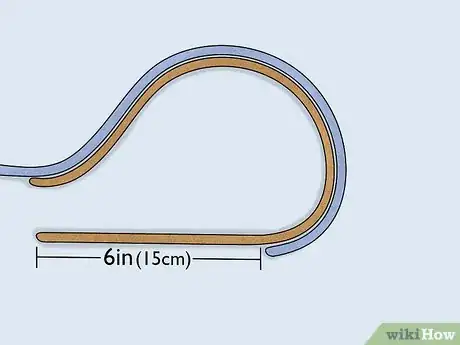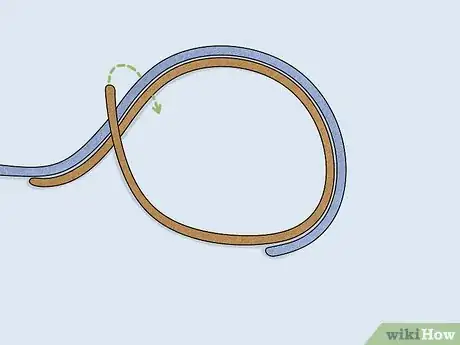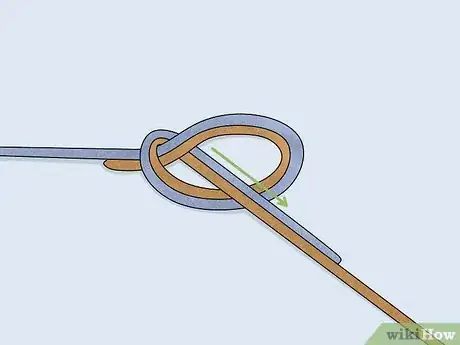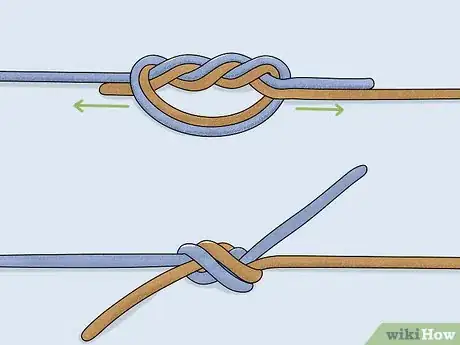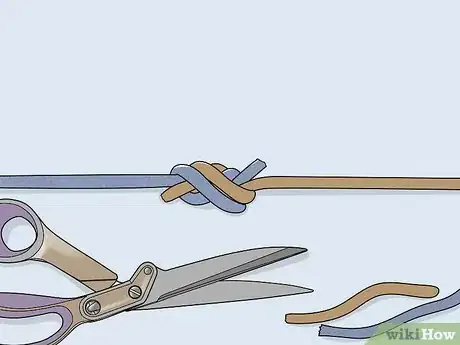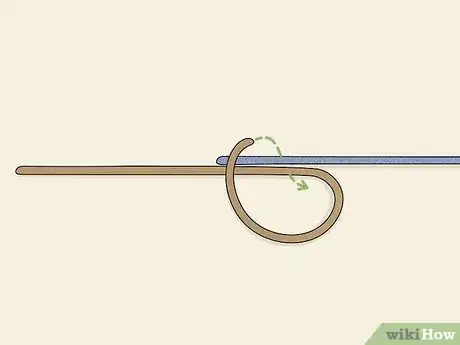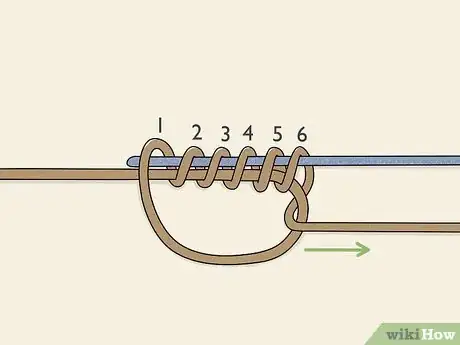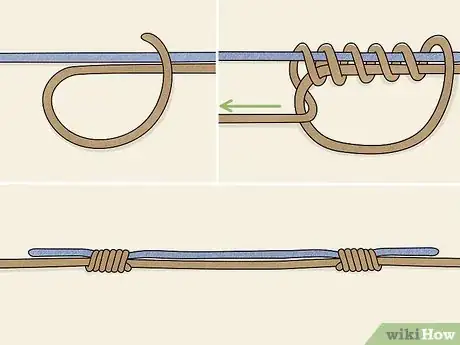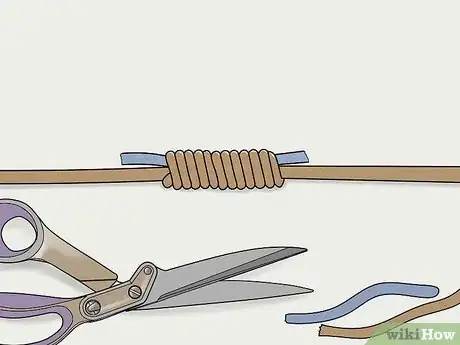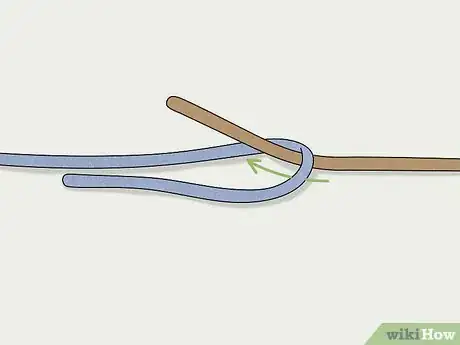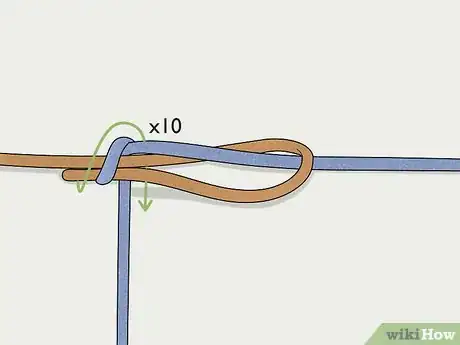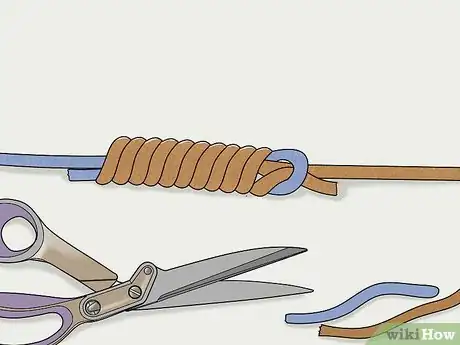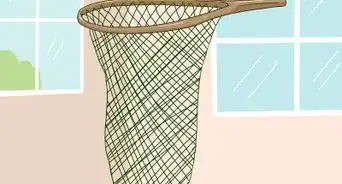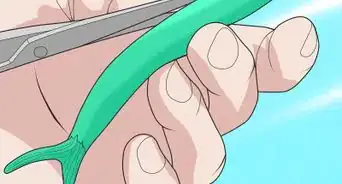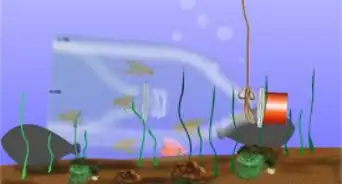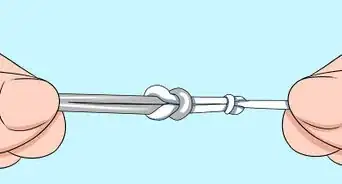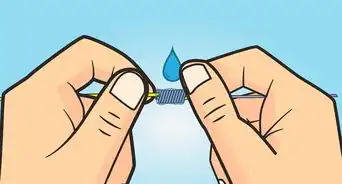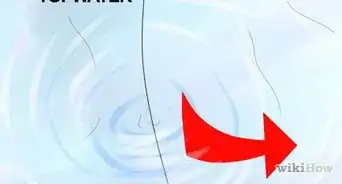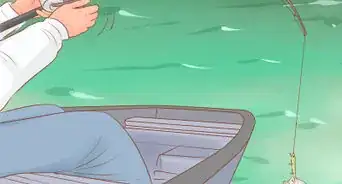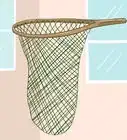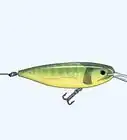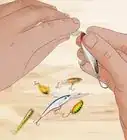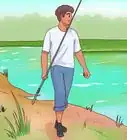This article was co-authored by wikiHow Staff. Our trained team of editors and researchers validate articles for accuracy and comprehensiveness. wikiHow's Content Management Team carefully monitors the work from our editorial staff to ensure that each article is backed by trusted research and meets our high quality standards.
This article has been viewed 118,103 times.
Learn more...
Whether you want to tie a leader to a main line or tie together two lines of different diameters, there are many types of strong knots to choose from. For example, the surgeon’s knot is one of the strongest and best for tying together any two lines when time is of the essence. On the other hand, the double uni knot is even stronger, but is more complex and takes longer to tie. Then there are knots that work particularly well in specific use cases, such as the Albright knot which is great for fly fishing. Learn how to tie a few different knots and you’ll be able to join two lines in almost any scenario!
Steps
Tying a Surgeon’s Knot
-
1Place the 2 lines side by side, overlapping by about 6 in (15 cm). Put the 2 lines running parallel to each other, with the line to the reel and the line to the leader running in opposite directions. Overlap them by approximately 6 in (15 cm) so you will be able to create a loop with both of the lines where they overlap.[1]
- The surgeon’s knot can be used to tie together both lines of equal and unequal sizes.
Tip: The surgeon’s knot is very useful when you are in a rush to get 2 lines tied together or the conditions aren’t right to tie a more complex knot. For example, when your line breaks and you need to tie on a new leader or if your hands are too cold to tie something more time-consuming.
-
2Form a loop with both of the lines. Grab both of the lines at the right-hand side. Curl them into a loop, crossing back over the top of the lines where they run parallel.[2]
- Overlap the loop with the 2 parallel lines enough to tie a double overhand knot. A double overhand knot is just a regular overhand knot, the most basic knot you probably already know how to tie, but with an additional pass through the loop.
Advertisement -
3Pull both ends of the lines through the loop. Slide the ends of the loop under the parallel lines and pull them up through the loop to start tying a double overhand knot. This part is just like tying a standard overhand knot.[3]
- If you don’t have enough slack to tie an overhand knot, then start over and make a bigger loop.
-
4Wrap the ends around the lines and pull them through the loop again. Cross the ends of the loop back over and under the 2 lines. Pull the ends up through the loop to make a double overhand knot, leaving the loop loose.[4]
- The double overhand knot will look like a little braid at this point.
- You can make a third pass through the loop if you want to make what’s called a triple surgeon’s knot.
-
5Pull on all 4 ends of the lines at once to tighten the knot. Pinch the 2 ends on the left-hand side between the fingers on your left hand and the 2 ends on the right-hand side between the fingers on your right hand. Pull on all the lines simultaneously to cinch the knot closed.[5]
- The knot will now look like a tight little “X” shape.
-
6Trim the tag ends of the lines with scissors or line cutters. The tag ends are the loose ends coming out of the knot. Cut them down as close to the knot as you can to finish tying the lines together.[6]
- The surgeon’s knot is very strong for how simple it is to tie. This makes it a great first knot to learn for tying 2 lines together!
Using a Double Uni Knot
-
1Lay the 2 lines parallel so the ends overlap by 6 in (15 cm). Place the 2 lines so they run parallel with the ends facing in opposite directions. Overlap the ends by at least 6 in (15 cm) to give yourself enough line to tie the knot with.
- The double uni knot is a simple and fast way to tie any 2 lines together. It’s a strong and reliable knot that works for all types of fishing line.
Tip: The double uni knot can be used to tie together 2 lines of the same diameter or 2 lines of different diameters, such as when tying a braided line to a monofilament line.
-
2Form a loop with the end of 1 of the lines. Grab the end of the line in your fingertips and circle it back, then up and over the 2 lines where they overlap. Lay the end of the loop across the 2 parallel lines approximately in the middle of where they overlap.
- This loop is sometimes referred to as the “uni knot circle.”
-
3Wrap the end of the looped line 6 times through the loop around the 2 lines. Take the end of the loop you just made and wrap it around both lines where they overlap, pulling the end through the center of the loop. Leave the loop loose while you wrap the lines.
- This is what forms the actual knot that keeps the lines together and is often referred to as “tying the uni knot.”
-
4Pull the tag end to cinch the knot closed. The tag end is the end you used to tie the uni knot. Grab it and pull it firmly until the knot is all the way closed.
- You will now have a tightly formed uni knot with 6 stacked coils, like a little spring.
-
5Repeat the process with the end of the other line to make another uni knot. Form the uni knot circle with the loose end of the overlapped line. Tie the second uni knot, then pull the other tag end of the line to tighten the knot.
- You will now have 2 tight uni knots with some space in between them.
-
6Pull both standing ends of the lines apart to bring the knots together. The standing ends of the lines are the long parts that you didn’t use to tie the knots with. Grab 1 in each hand and pull them in opposite directions to bring your 2 uni knots together into 1 double uni knot.[7]
- The double uni knot has a strength rating of about 90% and will hold your lines together in almost all fishing scenarios.
-
7Use scissors or line cutters to snip off the tag ends of the knots. Cut off the excess line from each uni knot down as close to the first coil as possible. Your lines are now tightly tied together and ready to use!
- Make sure that you have pulled the knots together as tightly as you can before you snip off the tag ends.
Using an Albright Knot
-
1Make a loop at the end of 1 of the lines. Use the thicker line if you are joining 2 lines of different diameters. Use either line if you are tying together 2 lines that are the same size.[8]
- The Albright knot can be used to tie together lines of the same diameter or unequal lines.
Tip: This knot works particularly well when you need to tie a backing line to a fly line because it will slide easily through the guides of your reel if a fish pulls out all of your fly line and reaches the backing line.
-
2Put the end of the other line through the loop. Take the end of the other line and pull it through the loop you made. This will be the thinner line if you are tying together unequal lines.[9]
- Pinch the loop at the bottom of the loop to keep it together while you work on tying the knot.
-
3Wrap the line 10 times around the loop and itself. Slide the tip of the line under the loop and start wrapping it around both strands of the looped line and itself. Wrap it tightly around all 3 strands of line until you have made 10 wraps.[10]
- There are 3 strands of line to wrap around because you are wrapping the line around itself as well as the other line that you looped.
- Remember to always wrap with the thinner line if you are tying together 2 lines of different diameters.
-
4Put the end of the wrapped line back through the loop. Slide the tip of the wrapped line back down through the loop running parallel to itself. Pull it through the other side and grab both the tag end and standing line between your fingertips.[11]
- The tag end is the end you just use to wrap and tie the knot, and the standing line is the long part that you didn’t wrap with.
-
5Pull both ends of the wrapped line to tighten the knot. Hold the ends of the line you created the loop with in 1 hand and the ends of the line you wrapped with in the other. Pull the ends of the line you wrapped with until the knots is tightened all the way.[12]
- If you joined 2 unequal lines, then the ends of the thinner line are what you pull on to tighten the knot.
-
6Clip the tag ends with scissors or line cutters. Cut each tag end as close to the knot as you can to close the knot. Your 2 lines are now tied together and ready to go fishing.[13]
- Remember to double-check that the knot is tightened as far as it will go before clipping the tag ends.
Things You’ll Need
- 2 fishing lines
- Line cutters or scissors
References
- ↑ https://www.animatedknots.com/surgeons-join-knot
- ↑ https://www.animatedknots.com/surgeons-join-knot
- ↑ https://www.animatedknots.com/surgeons-join-knot
- ↑ https://www.netknots.com/fishing_knots/surgeons-knot
- ↑ https://www.netknots.com/fishing_knots/surgeons-knot
- ↑ https://www.netknots.com/fishing_knots/surgeons-knot
- ↑ https://www.youtube.com/watch?v=5YENkaaXo_U&feature=youtu.be&t=90
- ↑ https://www.animatedknots.com/albright-knot
- ↑ https://www.animatedknots.com/albright-knot
